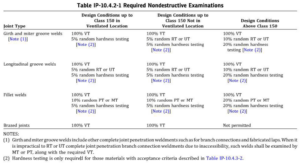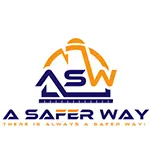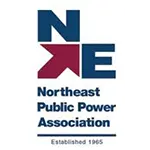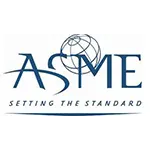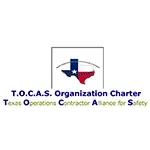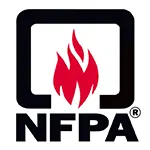April Membership Special
3-years for $100
Just buy a Single User Membership and your $100 gets you three (3) years of access instead of one (1) year
CLICK HERE to Renew your Membership
CLICK HERE for a NEW Membership
CLICK HERE to see eligibility requirements for FREE Membership
If you have any questions, please contact me
SAFTENG has:
- Over 18,000 categorized unsafe acts/conditions and accident/injury photos
- Over 1,500 ppt's & doc's in the SAFTENG Library
- Over 4,000 Technical Articles on Process Safety, Emergency Response & OSH topics
- Over 450 videos (those not allowed on YouTube Channel)
Many THANKS to my NEW Members and those who CONTINUE to support SAFTENG:














May 17, 2024
From OSHA’s summary of the Final Rule: Heating, Air-conditioning, & Refrigeration Distributors International (HARDI) asked OSHA to update its Process Safety Management standard (PSM), 29 CFR 1910.119, to reflect this change once this rule is finalized (Document ID 0355, p. 2). HARDI’s comment is out of scope for this rulemaking, which pertains solely to updating the HCS. However, OSHA...
Read More
May 17, 2024
OSHA is amending the Hazard Communication Standard (HCS) to conform to the United Nations’ Globally Harmonized System of Classification and Labelling of Chemicals (GHS), primarily Revision 7 (Rev. 7), address issues that arose during the implementation of the 2012 update to the HCS, and provide better alignment with other U.S. agencies and international trading partners, while enhancing the effectiveness...
Read More
May 14, 2024
I have spent much time with clients doing “Engineering and Code Reviews.” These have been instrumental in avoiding many issues when it comes time for the INITIAL PHA. Depending on the process size and complexity, these can take 0.5 – 3 days, but that time is spent ensuring the primary containment systems and all the layers of protection that come into play for the PREVENTION-PROTECTION-MITIGATION...
Read More
May 14, 2024
It is rare; I can not recall ever disputing NFPA in any of their guides/standards/codes. However, section 27.7 of NFPA 30 is worded incorrectly and needs to be called out as it poses significant risks if followed by the letter. Section 27.7 covers the pressure and leak testing of “flammable liquid” piping circuits. Although I am thankful for NFPA including this in NFPA...
Read More
May 14, 2024
May 2, 2024 MEMORANDUM FOR: REGIONAL ADMINISTRATORS STATE DESIGNEES THROUGH: AMANDA EDENS Deputy Assistant Secretary of Labor for Occupational Safety and Health FROM: SCOTT KETCHAM Acting Director, Directorate of Enforcement Programs LEE ANNE JILLINGS Director, Directorate of Technical Support and Emergency Management SUBJECT: Enforcement Guidance Under OSHA’s Recordkeeping Regulation When First...
Read More
May 13, 2024
The National Institute for Occupational Safety and Health (NIOSH) has honored a request by Honeywell International Inc. to voluntarily rescind two NIOSH respirator approvals issued to Honeywell International Inc. Due to the voluntary rescission of these NIOSH approvals, respirators bearing these NIOSH approval numbers MAY NO LONGER BE USED, manufactured, assembled, sold, or distributed. As of...
Read More
May 13, 2024
The Department of Health and Human Services (HHS) proposes to amend regulatory requirements that would be used by the Centers for Disease Control and Prevention’s (CDC) National Institute for Occupational Safety and Health (NIOSH) to test and approve Combination Unit Respirators (CURs). NFPA defines a CUR as…
…
HomeRead More »
Read More
May 13, 2024
MultiVapor™ has been updated to resolve the errors users experienced with a missing MSSTDFMT.DLL file, and other minor typographical errors. MultiVapor™ is a computer tool for estimating breakthrough times and service life of air-purifying respirator cartridges manufactured to remove toxic organic vapors (OV) from breathed air. It can also be used for larger filters and for carbon beds of any size...
Read More
May 12, 2024
On May 2, 2023, an employee working for a gas station and convenience store arrived to talk to a coworker (the employer) about payment for the building he leases. The employee asked the coworker if he could help him apply a fuel tank liner.
The employee climbed inside the tank and plugged in his own light into an extension cord.
…
HomeRead More »
Read More
May 12, 2024
Respondents owned and operated a seafood processing and cold storage warehouse facility. The Facility is one building that consists of two separate spaces on either side of a dividing wall. One side of the Facility is used for seafood processing and packaging. The other side of the Facility is a cold storage warehouse used to store the packaged seafood. The Facility is located alongside Gloucester’s...
Read More
May 11, 2024
If you want a spirited process safety debate, simply mention the practice of having “intervening valve(s)” before or after a Pressure-Relieving Device (PRD). There are some who swear that it is not allowed, but in fact, it is. This is how I learned about the “Car-Seal” program early in my career. ASME B31.12 is one of those RAGAGEPs that allows this practice...
Read More
May 10, 2024
I have written many articles relating to ASME B31.3 and the QA/QC requirements each weld/flange must meet. However, in B31.12, Table IP-10.4.2-1 Required Nondestructive Examinations, the code requires 100% VT (Visual examination). The code goes on to require a more extensive examination sampling of 5-10% joints using with Liquid Penetrant (PT) or Magnetic Particle (MT). Even the VT...
Read More


